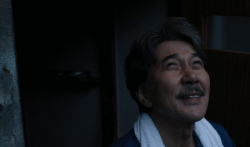D.C.’s place in popular memory is one of power grabs and political scandal. I often forget, as I imagine others do, that the District is a real city with its own distinct cultural and artistic history. Go-go and the Washington Color School are both artistic movements that called the District home. The Hirchhorn Museum’s new exhibit, “Gravity’s Edge,” is a celebration of the Color School.
The Washington Color School, unique from the New York-based Abstract Expressionism, focused on the artistic process and the use of new methods with materials such as acrylic and other synthetic paint. The Washington Color School was similar to, yet disparate from, the Color Field style.
Don’t come expecting the Phillips Collection’s Rothko room, though. The Hirshhorn’s exhibit delves much deeper into a stylistic and spatial juxtaposition between the effect of gravity on the work and its edge. Although there is a focus on a hodgepodge of synthetic materials, including acrylic, latex, and magna, another type of acrylic paint, the most captivating are largely the oil and watercolor works.
The exhibit, which is featured on the Hirshhorn’s Lower Level, appears to be located in a surreal and disorienting cavern. The expansive sterility of the Lower Level gallery certainly creates room for an increased accessibility to color expression. Shaped like an ‘L,’ you’re drawn in by the lure of what’s hidden behind the left hand corner. It doesn’t disappoint, as turning the corner reveals Lynda Benglis’s 1969 “Corner Piece,” a multicolored latex paint spill. The museum guard says it’s the crowd favorite, especially for those patrons who are three feet tall and wear light-up sneakers.
The exhibit is short and easy to digest. The exhibit opens with stunning kaleidoscopic and buoyant forms that draw attention not to the paintings’ edges but instead to the equivocal shapes within. These opening paintings are those with which you will spend the most time, and their enigmatic allure will almost steal you away from the gallery space of the exhibit.
But not quite. The exhibit’s largest presence is a series of acrylic Color Field works, which tend to evoke the classic, “I could do that, too,” response.
Visually, acrylic can be alienating. Acrylic paint’s hard and defined edges, as opposed to the blurred lines of oil or watercolor, don’t leave the viewer with much interpretational wiggle room. The shift in color palette from vivid blues and greens to the 70s shag rug isn’t all that enticing.
Even so, the interplay between material and form are clearly elucidated. It’s that blatant absence of ambiguity in the exhibit’s closing works which provides the biggest barrier. “Gravity’s Edge” shifts from a study in captivating technical virtuosity, form, and color to an artistic disciplinarian. It’s so iconographic that there’s no room for enjoyment in those final paintings.
With that being said, the exhibit’s opening colorful works, especially those by Sam Francis and Paul Jenkins, are glorious and captivating. Even though style and form are emphasized, color wins out.
Gravity’s Edge
Hirshhorn Gallery
700 Independence Ave S.W.
Feb. 7, 2014 – June 15, 2014
10 a.m. – 5:30 p.m. daily





